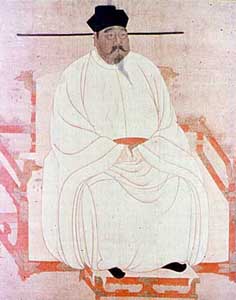| Legole.Com Discover china. Explore the beauty and wonder of the land, people, and culture of China. |
 |
|
|
 |
| |
Northern Song (960 - 1127)
Southern Song (1127 - 1279
|
 In political terms, the fall of the Tang Dynasty (681-907) and the resultant disintegration of the empire did not mean a sharp break with the past. The Five Dynasties all aspired to the reunification of China and by 959 the Later Zhou had brought much of the country back under a single ruler. The changes of dynasty were due to the change of ruling family. The ruling elite remained unaltered and the civil service continued the routine tasks of government with no serious disruption. In the south in several of the Ten States the same continuity was evident and the examination system continued. When Zhao Kuangyin seized power by a coup in Chenqiaoyi in 960 he was able to consolidate and extend his control in a restrained and methodical manner. The Song Dynasty that he founded has been divided into two periods. Firstly, the Northern Song when the capital was in Dongjing (present day Kaifeng City in Henna Province) from 960 to 1127. Secondly, the Southern Song, with their capital in present day Hangzhou from 1127 to 1279. In political terms, the fall of the Tang Dynasty (681-907) and the resultant disintegration of the empire did not mean a sharp break with the past. The Five Dynasties all aspired to the reunification of China and by 959 the Later Zhou had brought much of the country back under a single ruler. The changes of dynasty were due to the change of ruling family. The ruling elite remained unaltered and the civil service continued the routine tasks of government with no serious disruption. In the south in several of the Ten States the same continuity was evident and the examination system continued. When Zhao Kuangyin seized power by a coup in Chenqiaoyi in 960 he was able to consolidate and extend his control in a restrained and methodical manner. The Song Dynasty that he founded has been divided into two periods. Firstly, the Northern Song when the capital was in Dongjing (present day Kaifeng City in Henna Province) from 960 to 1127. Secondly, the Southern Song, with their capital in present day Hangzhou from 1127 to 1279.
The Song Dynasty ranks alongside the Tang and also the Han (206 BC - 220 AD) in importance. For a little under three and a quarter centuries under its rule, China enjoyed a period of economic growth coupled with great artistic and intellectual achievement. It is for this reason that the period is referred to as the Chinese Renaissance, comparing it with the Renaissance that spread through Europe |
|
|
 |
|
|
 |
|
